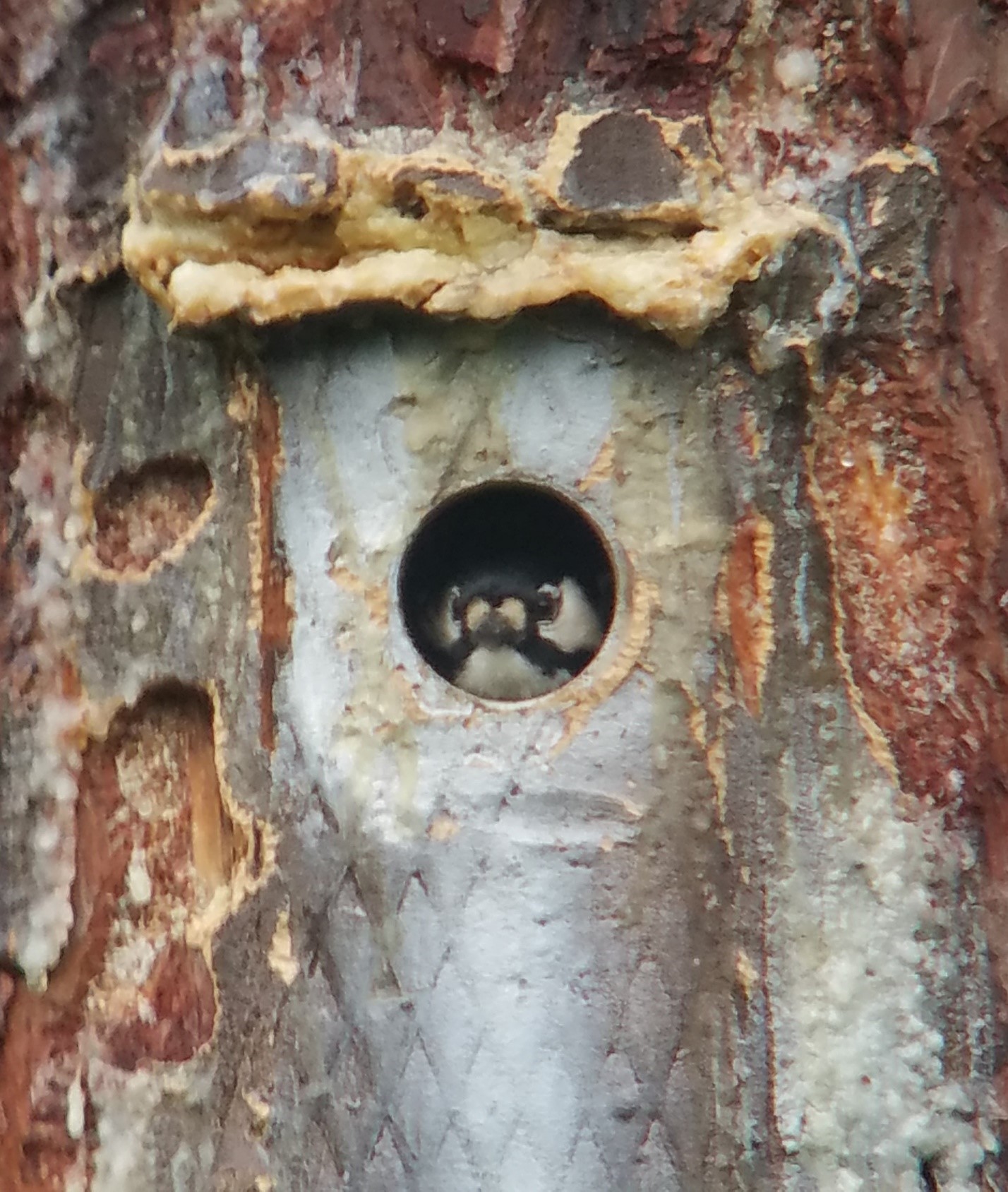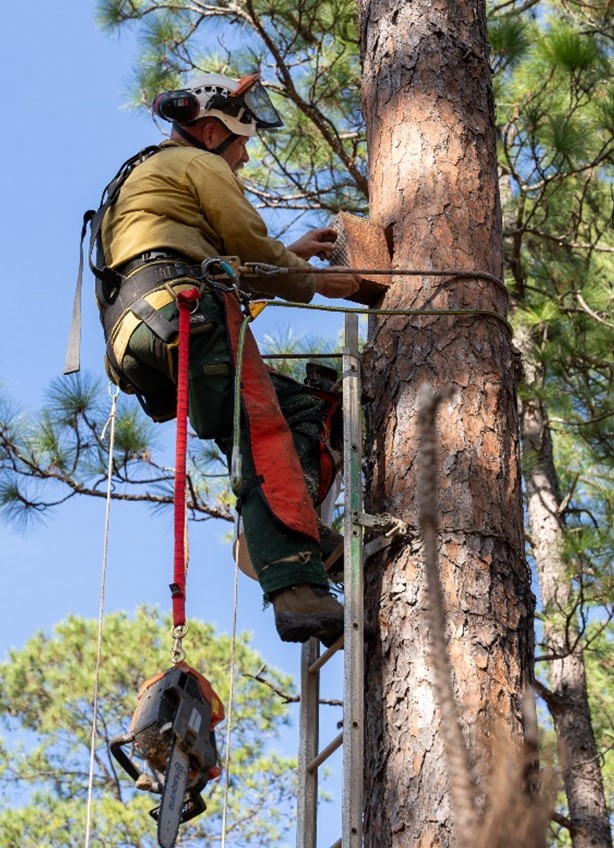Following Hurricane Helene, wildlife biologists from Savannah River Site and the Francis Marion and Sumter national forests have been working together to create new habitats for the site’s most famous resident species.
Office of Environmental Management
January 7, 2025AIKEN, S.C. — Following Hurricane Helene, wildlife biologists from Savannah River Site (SRS) and the Francis Marion and Sumter national forests have been working together to create new habitats for the site’s most famous resident species — the federally protected red-cockaded woodpecker.

A red-cockaded woodpecker is shown peeking out from a nest box within the Savannah River Site forests.
Generally, these woodpeckers prefer mature pine forests compared to those found on SRS. To help in the species recovery effort onsite, a team of researchers and biologists from the U.S. Forest Service developed artificial cavities to place into younger longleaf pines, creating a ready-made place for the woodpeckers to nest and raise their young.
Forest Service biologists installed 125 new cavity inserts into longleaf pines within established habitats for the woodpeckers on SRS to replace cavities damaged by the storm.

A wildlife biologist inserts a red-cockaded woodpecker cavity box into a longleaf pine tree on Savannah River Site.
These habitats, called cluster areas, consist of an open park-like pine tree setting where trees have been removed through thinning operations. The areas are maintained by the application of prescribed fire, eliminating hardwood growth and slowing the development of forest understory, which is the layer of trees and shrubs between the forest floor and forest canopy.
These open areas were particularly vulnerable to the hurricane-force winds from Helene. Fifty-four of the 201 cluster areas received damage from the storm, and in those areas, 73 trees with cavities were destroyed. Two woodpeckers died because of storm damage.
“Sound, active management ensures continued red-cockaded woodpecker population growth. This stewardship of our federally protected species is an important piece of the U.S. Department of Energy missions, which the U.S. Forest Service has supported on SRS since the 1950s,” National Nuclear Security Administration Savannah River Natural Resource Program Manager Andy Horcher said. “This working forest is a vital part of SRS.”
The red-cockaded woodpecker was listed as an endangered species in the 1970s. Its population has grown significantly across the southeastern U.S., and the species was recently downlisted to threatened. On SRS, the population of the woodpeckers has grown from one potential breeding group in 1985 to over 150 in 2024, with a total population over 500 woodpeckers.
-Contributor: Josef Orosz
To receive the latest news and updates about the Office of Environmental Management, submit your e-mail address.

